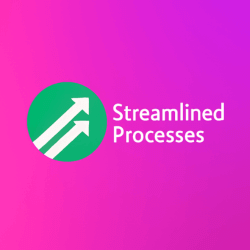For Subscription Management Billing Platforms, see our main page here.
Why Subscription Management Billing Platforms Matter in Today’s Market
Today’s digital economy relies on recurring revenue models more than ever. Think of streaming services, productivity tools, and even razors delivered monthly. As a result, companies need smarter systems to manage these business models efficiently—this is where Subscription Management Billing Platforms come into play.
These platforms are more than just billing tools. They automate recurring invoicing, manage trials and renewals, and integrate customer relationship management. Consequently, the right platform can reduce manual work, cut churn, and boost revenue accuracy. Above all, they help businesses scale without running into growing pains.
How Subscription Billing Platforms Have Evolved
In the early 2000s, recurring billing was managed with spreadsheets and homegrown systems. These setups worked—for a while. However, as SaaS companies scaled, the complexity grew.
Fast-forward to today. Modern Subscription Management Billing Platforms can handle metered usage, multiple pricing tiers, regional tax laws, and various payment gateways. Moreover, AI and automation allow real-time revenue recognition and accurate forecasting. In other words, these platforms aren’t just back-end tools—they drive strategic business decisions.
Top Features to Look for in Subscription Management Billing Platforms
- Flexible Pricing Models: Support for flat-rate, per-user, usage-based, and hybrid billing.
- Robust Automation: Automatic invoicing, proration handling, and dunning management.
- Revenue Recognition: Comply with ASC 606 and IFRS 15 effortlessly.
- Real-Time Analytics: Track customer lifecycle metrics, churn rates, and monthly recurring revenue (MRR).
- Global Payments: Accept currencies worldwide and manage taxes like VAT or GST.
For example, SaaS companies like Slack and Zoom rely on automated billing systems to handle millions of user accounts accurately. They can’t afford manual mistakes or delayed payment trails.
Subscription Management Billing Platforms for Different Business Models
Not every company uses the same billing structure. Therefore, flexibility is key. Let’s examine a few variations:
- B2B SaaS: Requires invoicing with net terms, usage-based pricing, and integrations with CRMs like Salesforce.
- B2C Subscriptions: Needs high-volume transactions, simple user experiences, and scalable payment gateways.
- Media and Content Platforms: Often deal with regional pricing and trials, needing specialized rules for access and renewal.
In the same vein, fitness apps or e-learning platforms may benefit by offering trial periods, coupons, or limited-time discounts. Subscription Management Billing Platforms let businesses configure these dynamically, without requiring code every time.
Comparison of Leading Subscription Platforms
Several platforms dominate the market. Each has strengths depending on company size, compliance needs, and feature depth.
- Zuora: Best for large enterprises seeking deep integrations and revenue ops support. Offers strong audit trails.
- Chargebee: Ideal for fast-growing SaaS businesses. Known for user-friendliness and strong analytics dashboards.
- Recurly: Offers robust churn reduction tools and advanced A/B testing for pricing pages.
- Stripe Billing: Excellent for startups already using Stripe payments, with strong developer tools.
To clarify, no one platform is “best.” However, choosing a platform that fits your operational workflows and customer demands can save significant time and cost in the long run.
How AI Is Changing the Future of Billing
AI is quietly transforming how Subscription Management Billing Platforms function. For instance, some now predict churn based on customer behavior. Others adjust billing cycles in real-time to reduce payment failures.
Furthermore, AI can assist in detecting fraud, optimizing trial-to-paid conversions, and automating customer support responses. These advancements are not just trends—they’re future standards. Consequently, adopting platforms with strong AI components may offer a long-term edge.
This article was created with the assistance of AI tools and reviewed by our team at Streamlined Processes LLC to ensure accuracy and relevance.
Common Mistakes When Choosing a Billing Platform
Many businesses jump into a platform due to peer recommendations or lower costs. However, failing to assess backend compatibility, integration ability, or feature limitations could lead to major roadblocks later on.
To avoid this, consider the following:
- Can it grow with your customer base?
- Does it support your preferred currencies and tax rules?
- How easy is it to integrate with existing tools?
- Is reporting customizable and accessible to non-technical staff?
Most importantly, involve both finance and tech teams in the decision-making process. Their buy-in ensures fewer conflicts during implementation.
Use Cases: Real Examples of Success with Subscription Management Billing Platforms
Let’s look at real businesses leveraging the right tools effectively.
- A SaaS startup: Shifted from manual invoicing to Chargebee, reducing billing errors by 95% and saving 5 hours weekly.
- A global e-learning company: Used Zuora to manage regional pricing across 20 countries, increasing average revenue per user by 30%.
- A fitness app: Implemented Recurly for payment recovery and saved $20,000 monthly by reducing failed payments.
In conclusion, matching platform capabilities with your core needs leads to measurable business improvements.
FAQs on Subscription Management Billing Platforms
Q: What’s the difference between payment gateways and billing platforms?
A: Payment gateways process transactions, while billing platforms manage pricing, invoicing, and customer lifecycle rules.
Q: Are these platforms only for tech companies?
A: Not at all. Any business with recurring customers—gyms, magazines, services—can benefit from automated billing systems.
Q: Can these platforms integrate with my CRM or ERP?
A: Yes, most top-tier platforms offer robust APIs to connect with systems like Salesforce, HubSpot, QuickBooks, or NetSuite.
Q: What if I need custom billing logic?
A: Many platforms offer workflows, plugins, or developer tools to implement custom rules without complex coding.
Q: How secure are these systems?
A: Most adhere to PCI DSS standards and offer encryption, audit logs, and user role management to protect customer data.
Final Thoughts on Navigating Subscription Billing
Whether you’re a founder, finance leader, or operations manager, your subscription strategy must scale with your business. Subscription Management Billing Platforms make this possible by combining automation, compliance, and insights into a single system.
Choosing the right one may take time—but the rewards include faster growth, fewer errors, and happier customers.
Follow us on Facebook here.

